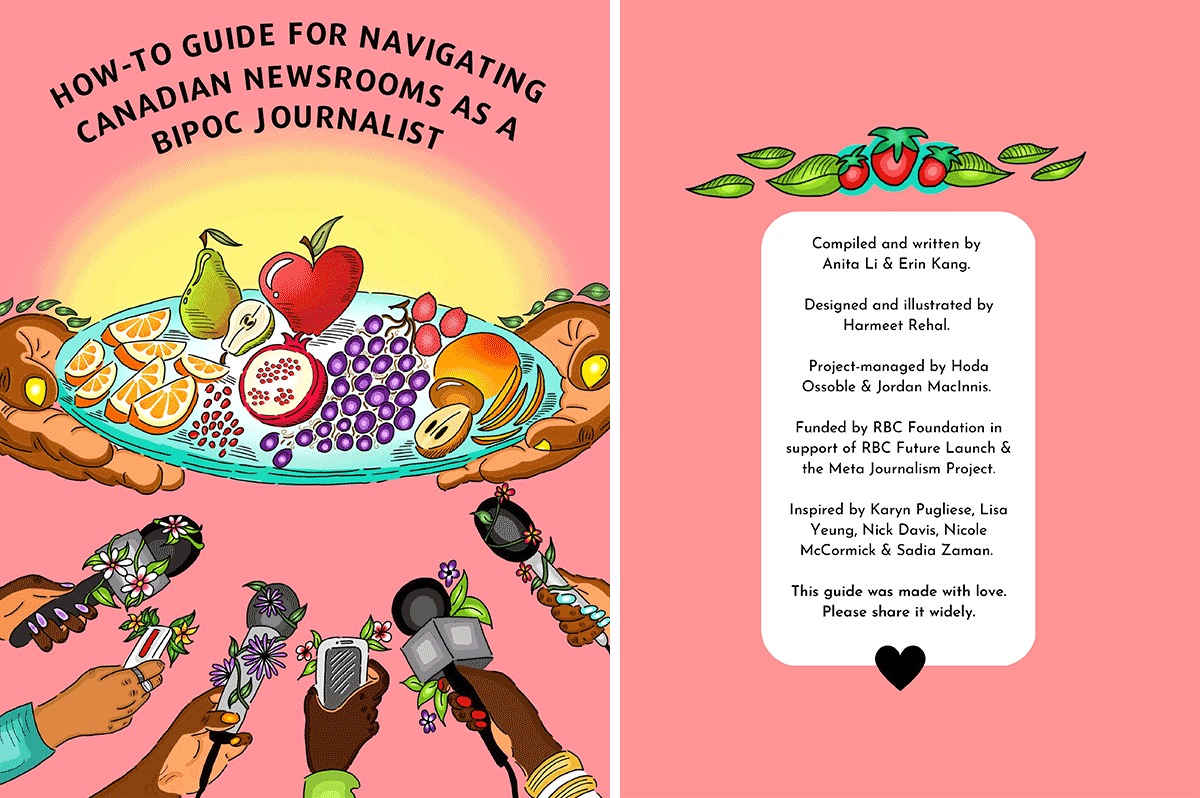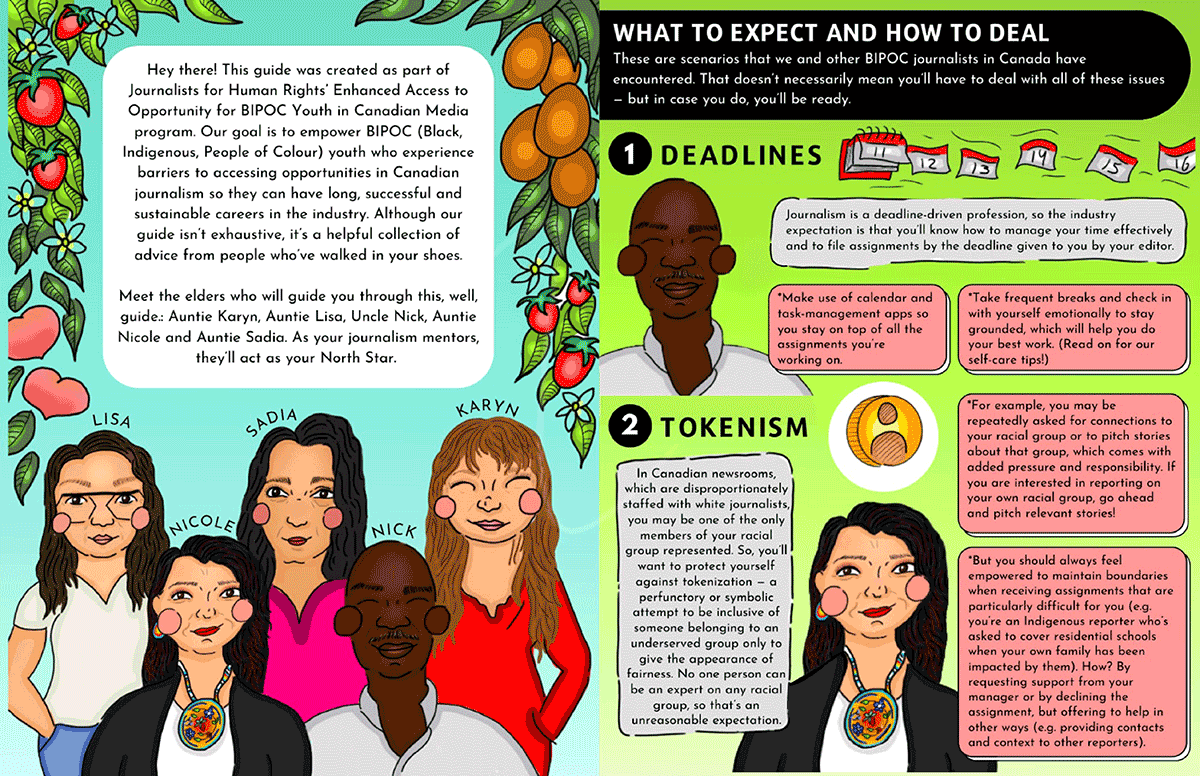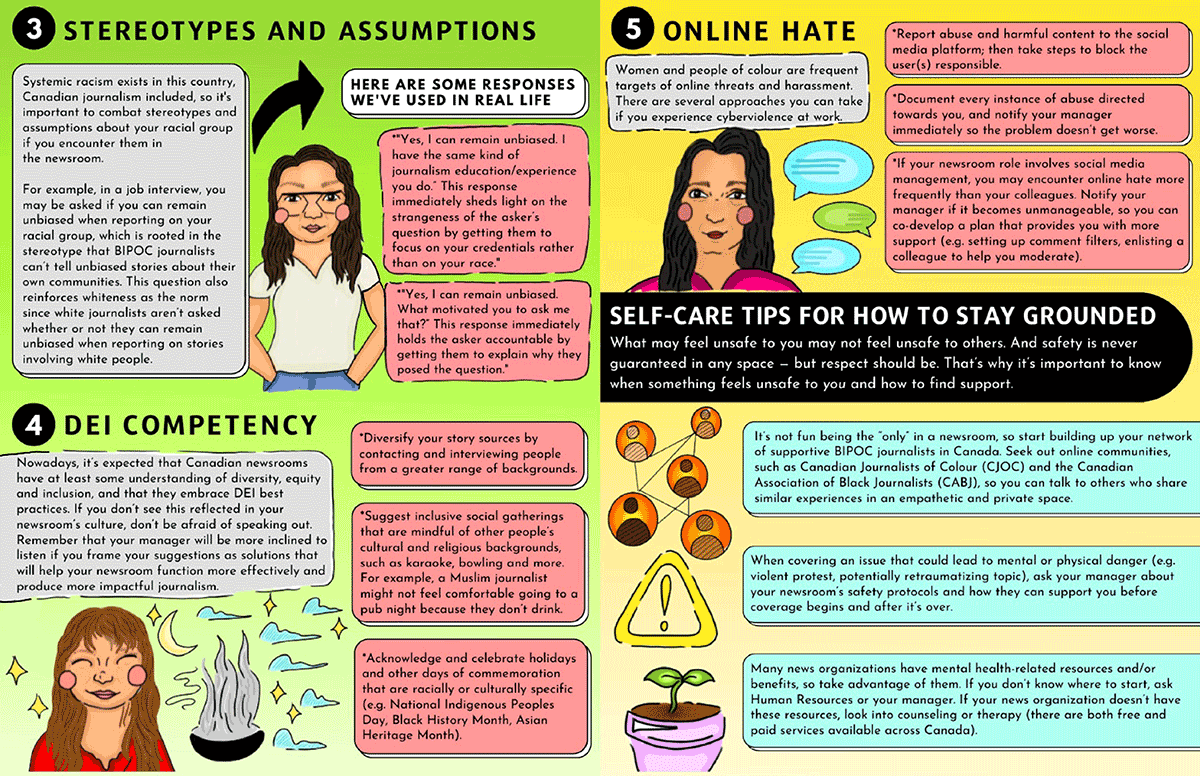New how-to guide supports young BIPOC journalists navigating industry
Young, racialized journalists now have a guide to help navigate issues and concerns about working in the field.
Anita Li, a journalist and former j-school instructor, created the How-to Guide for Navigating Canadian Newsrooms as a BIPOC Journalist, with facilitator and community-builder, Erin Kang, and illustrator, Harmeet Rehal, as well as other consultants.
The guide (external link) was launched as part of the Journalists for Human Rights’ Enhanced Access for BIPOC Youth in Canadian Media (external link) initiative, of which Li is the executive consultant.

Page 1 and 4 of: The How-to Guide for Navigating Canadian Newsrooms as a BIPOC Journalist.
(Illustration done by Harmeet Rehal)
Li formed an advisory board of racialized media leaders in Canada to gather their thoughts on what would be relevant information for young BIPOC journalists.
These journalists include Karyn Pugliese: at the time, the executive editor at the National Observer and School of Journalism visiting journalist; Sadia Zaman: Inspirit Foundation CEO; Nick Davis: CBC executive director of equity and inclusion; Lisa Yeung: former HuffPost Canada co-editor-in-chief and Nicole McCormick: CityNews Toronto senior manager of newsgathering.
“It was really critical to consult people who are advisors. So we have folks who are Indigenous, who are Black, who are South Asian, as well as East Asian,” she says.
The team based the graphic around a shared cultural reference: ‘aunties’ and’ uncles’.

Page 2 of: The How-to Guide for Navigating Canadian Newsrooms as a BIPOC Journalist.
(Illustration done by Harmeet Rehal)
“A lot of BIPOC communities have auntie and uncle cultures, which are basically folks who are not related to you but who are in your network of supporters,” Li said.
“Growing up, whenever we came over or hung out at a relative’s place, [aunties and uncles] would cut up pieces of fruit for us to eat .. it was something that was really interesting and common to our backgrounds, even though we don't share the same cultural background,” she says.
The inclusion of the fruits in the front page of the guide allowed for a more warm, conversational feel to those who came across it. Li and her team wanted to ensure that the advice being given came from a familiar perspective and provided grounding.

Page 3 of: The How-to Guide for Navigating Canadian Newsrooms as a BIPOC Journalist.
(Illustration done by Harmeet Rehal)
The guide attracted a lot of attention from the moment Li announced (external link) its publication.
“A bunch of people reached out and asked for copies and many of them are actually white journalists who are allies in their newsrooms. I find that the guide will be just as valuable for folks who are not racialized as much as the racialized journalists,” she says.
Li emphasizes the importance of action on the part of white journalists and editors, in actively advocating for a more inclusive news ecosystem.